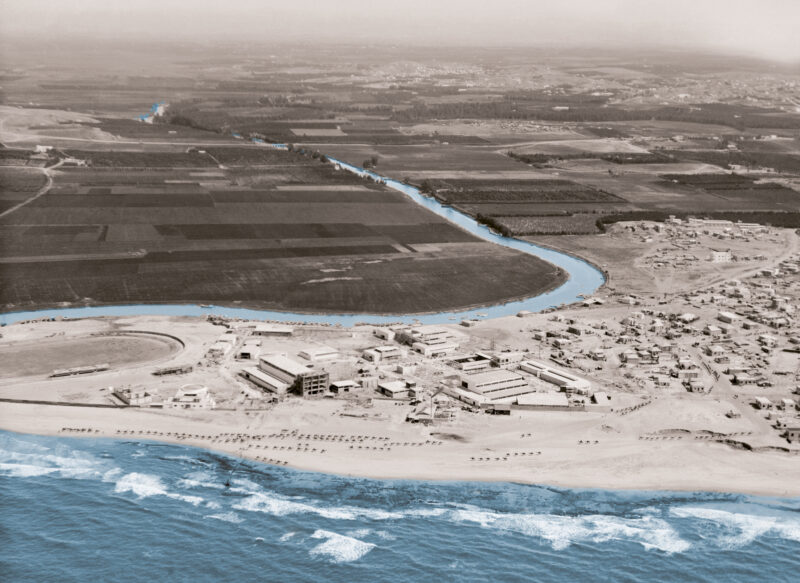
Poland’s participation in international exhibitions and fairs in the interwar period is a poorly recognized topic, hence the idea for the research project titled Poland at the Levantine Fair in Tel Aviv 1932-1936, which resulted in a book and an animated documentary film.
The Levantine (Middle Eastern) Fair was organized internationally in Tel Aviv from the early 1930s, although trade exhibitions promoting domestic manufacturing were held there almost a decade earlier. The fair significantly stimulated the development of modern architecture in the city.
Poland officially participated in the Levantine Fair from 1932 to 1936.
A book and documentary film under the same title The Eagle and the Winged Camel. Poland at the Levantine Fair in Tel Aviv 1932-1936 is the result of several years of research, queries and consultations. As a result, it was possible to visualize and describe the different attitudes of architects who, over the course of the three editions of the fair, advocated vernacular-national tendencies, or opted for an international style. The book and film also present issues of cultural and economic propaganda disseminated by the Polish state a dozen years after independence.
As late as 1932, the Polish pavilion in Tel Aviv was shaped like a Zakopane-style hut. When in 1934, with the approval of the Mandate authorities, permanent fair infrastructure was erected on the northern outskirts of Tel Aviv, the Polish exhibition occupied as many as three pavilions, as well as smaller kiosks. The modern expression of these buildings was decided then, as in 1936, by prominent local architects and artists from Poland who came especially for the Fair.
The animated film brings to life the images of the era, the location of the action on the Mediterranean Sea in the Jarkon River delta and the characters of its main characters. These are not only the founding fathers of Tel Aviv, patrons and originators of the Levantine Fair, but also Jewish and Polish-Jewish architects, planners and engineers active in the creation of the fair’s infrastructure. Some of them are well known from the literature on the subject (Arieh El-Hanani, Richard Kauffmann, Arieh Sharon), while others are returning from historical obscurity – such as Wladyslaw Lichtenstein and Hejman Zabludowski.
The half-hour film combines documentary and animated narration, photographs and archival footage with hard-to-find newsreels from the 1930s from the Jerusalem Cinematheque. It was created according to a concept and script by Artur Tanikowski with the team of Marta Ignerska (graphic design), Marek Kurpios (animation and editing) and Piotr Kaliński (music). The film was produced in three separate language versions: Polish, Hebrew and English.